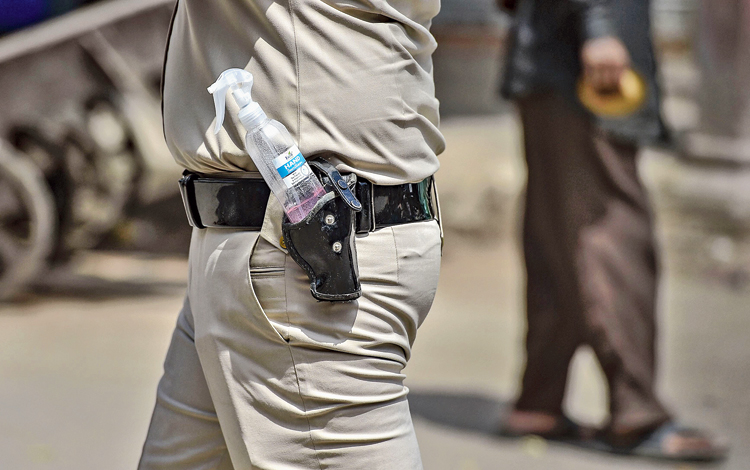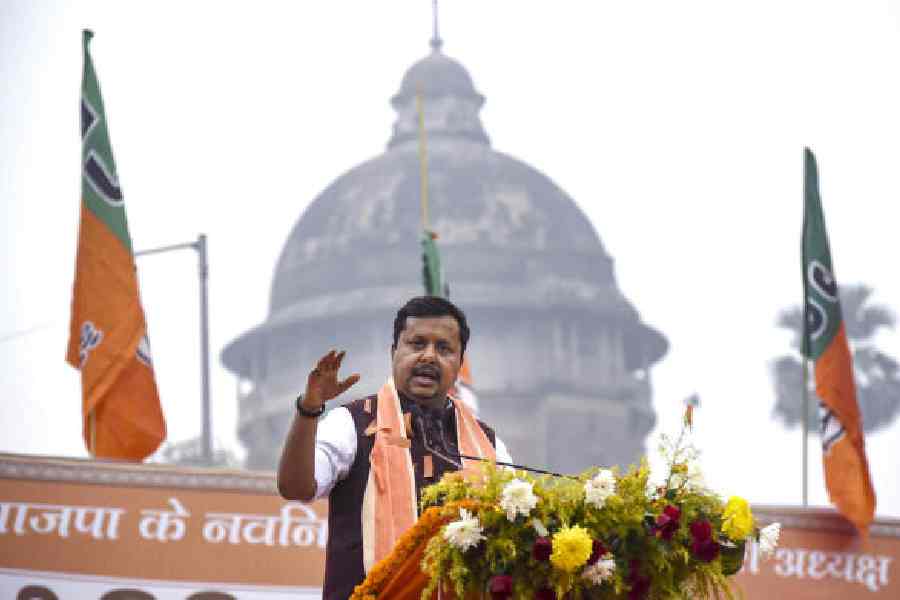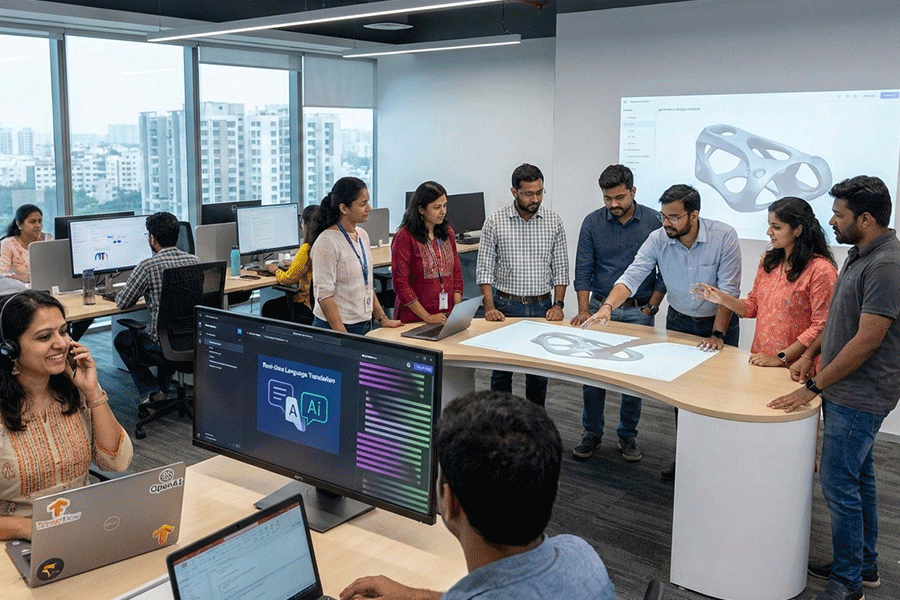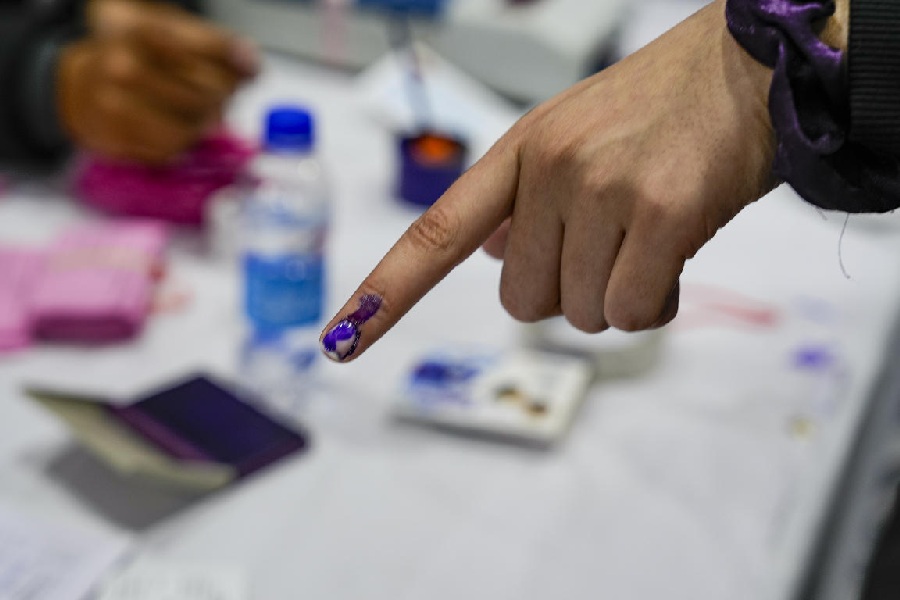India should boost community testing for SARS-Cov-2 (novel coronavirus) infection to get a real picture of the Covid-19 pandemic.
If the sensational rise in the reported number of cases with Covid-19 in the US over the past few days is interpreted as the current rate of spread of the disease in that country, it will be a gross misjudgement.
This has largely happened because the US government has drastically increased its capabilities for community testing for the novel coronavirus during this period to get a true and rapid picture of the disease scenario in the country.
This is very essential as every individual infected by the virus may not show symptoms of Covid-19 or land up in the hospital and may, in fact, act as an unsuspecting vehicle for spreading the virus in the form of an “asymptomatic carrier”. This is perhaps the most disturbing aspect of the behaviour of this particular virus, compared to other similar viruses of the past, which needs to be seriously recognised to avoid the dangerous prospects of community spreading.
Notably, quite a few cases of individuals carrying the virus as asymptomatic carriers for several weeks have been reported. This commands adequate recognition of the underlying risks of allowing such asymptomatic carriers of the virus to indulge in community mixing without effective screening.
Although we are perhaps content with the belief that the present lockdown has helped us to accomplish the “social distancing” required to ward off the virus, in reality, we need to appreciate that practising the needed level of social distancing is extremely challenging in our country with a high population density and the relatively large number of people living in the average household.
What we have possibly managed to do in the form of a lockdown is technically fragmenting our community into isolated pockets with each pocket defining a family or a sub-community with or without the enabling social distancing required to limit human-to-human viral transmission.
Admittedly, this is the best that we could have done to prevent a rapid surge in the incidence of this disease and a consequent breakdown of our limited healthcare resources.
However, given the probability of the presence of asymptomatic carriers of the SARS-Cov-2 virus in such “locked populations” who may be still carrying the virus, the prospects of them infecting an entire household without adequate social-distancing provisions is quite high.
Thus it is important to identify such infected individuals as well as the families or communities affected by them before the present lockdown can be lifted to restore normal community mixing. The consequence of failure to do so is perhaps too obvious to elaborate.
As we are halfway down the planned lockdown period, the released official numbers would indicate that we have been somewhat successful in “flattening the curve” representing the projected number of Covid-19 patients. These numbers would further imply that we probably just managed to prevent community spreading, if not absolutely, but from reaching levels that would have created a critical health management crisis for our available healthcare support system.
But given the uncontrollable manner in which the disease is still spreading in some of the most advanced countries in the world, it would be perhaps naïve as well as premature for us to turn complacent and conclude that the battle is all over.
We just cannot afford to do so until we have, like the US, determined the real scenario of the disease through thorough evaluation of the latent community infection, especially through screening and isolation of the vulnerable in the unmonitored community, now under lockdown.
As the present number of hospitalised Covid-19 patients look manageable, considering our healthcare preparedness, we can now afford to prioritise monitoring the possible presence of asymptomatic carriers in the “locked households” as well as among the healthcare workers.
The routine testing and protection through suitable personal protective equipment (PPE) of the healthcare providers engaged in Covid-19 management is not only imperative to ensure that they are not infected in their sacrificing efforts to save us but also to ensure that they do not land up harming others, especially their unsuspecting family members and un-infected healthcare recipients.
All returnees from countries affected by the Covid-19 pandemic (which now stands at a whopping 195 countries) who have or may not have been advised house quarantine and their family members (especially those who have been exposed to them during this lockdown) should be tested for the virus before they are allowed out as the first measure of preventive screening.
This should be done at the earliest. It needs to be recognised without any malice that these are the potential candidates through whom the virus has entered our country. The negative test for thermal screening (that tests for the presence of fever) at the airport, based on which they were allowed to enter, is in no way dependable for ensuring the presence of infection from this virus in such individuals as a large number of asymptomatic carriers of the virus may not show any symptom of Covid-19.
In fact, the very investment in such thermal screening has been a sheer waste of resources as it just takes a simple antipyretic tablet for a passenger with fever to evade such tests.
Looking at the unprecedented life damage that this virus is still inflicting globally, one should not keep any stones unturned to ensure its absolute absence or exit from the community before we plan to restore social normality.
Lifting the lockdown under the presumption that the virus will be eliminated through deprivation of 21 days of biological support is also not a scientific way to achieve this goal. The elimination of the virus from the community needs to be confirmed solely through human testing — like the rest of the world is doing.
In this respect, the Indian Council of Medical Research (ICMR), the apex medical body of the country has allowed 113 government labs and 51 private labs to conduct tests for the virus all over the country. This is just not sufficient for boosting our capability for community testing to the desired levels. However, given both developing the kit for detecting the virus as well as performing detection tests with human samples is no rocket science, we should immediately augment our capability to increase the level of indigenous kit production as well as testing like most affected countries have done.
This can be done particularly by engaging the biotech companies, research institutes and university labs that are equipped to support this endeavour. This is a time when compliance-red tape needs to take the back seat to ensure swift approvals and accreditations as well as the increased involvement of the resourceful.
Admittedly, a large section of the scientific community is frustrated that they are being made to sit at home when they can effectively contribute to help the country address this crisis with all the equipment and manpower at their disposal.
So are several biotech companies which are finding it difficult to come forward with their indigenously developed detection kits for the virus. Notably, the US and Italy have been relatively swift in providing such approvals and mobilising all such resources to increase their testing capabilities to have a realistic assessment of this health crisis, even though social distancing advisories in these countries were not complied with to the extent we have possibly achieved.
All said we need to now gear up our testing capabilities and community testing without further delay, if we intend to successfully ward off this sinister virus and avert its re-emergence.
Koustubh Panda is professor and head of the Department of Biotechnology, University of Calcutta










